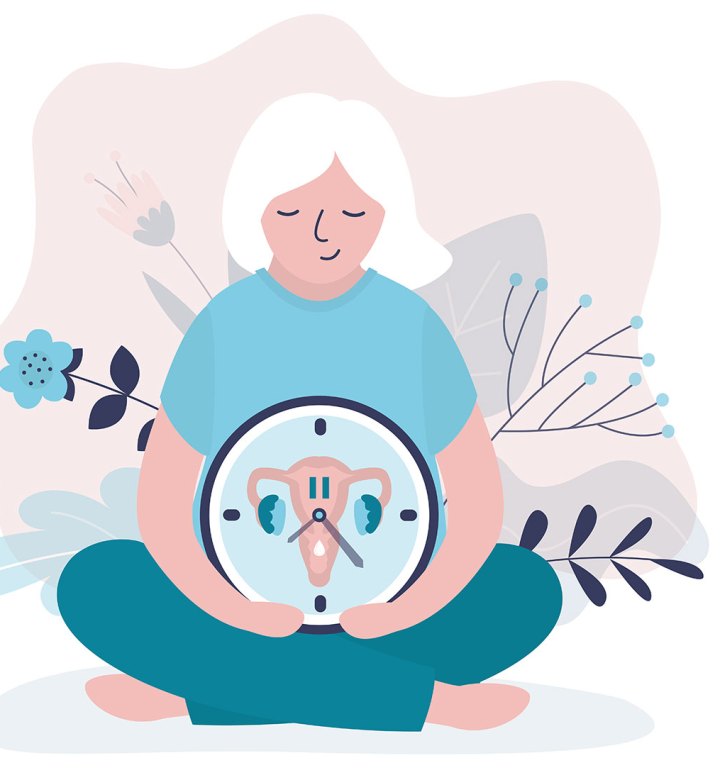Benjamin Franklin once wrote that nothing is certain in this world except death and taxes, but we’d like to add one more certainty for 50 percent of the population: menopause. Menopause is defined as one year from a person’s final menstrual period, and the average age is 51.5. There’s a lot more to it than a one-year anniversary of your last period, though; there’s perimenopause, which precedes menopause, and postmenopause, which succeeds it. To learn more about what signals the end of menopause (and what to expect leading up to it), we reached out to OB/GYN Dr. Mindy Goldman, MD, the Chief Clinical Officer at Midi Health.
What Signals the End of Menopause? An OB/GYN on What to Expect at Every Stage
There’s a light at the end of the hot flash tunnel

Meet the Expert
Dr. Mindy Goldman, MD, is the Chief Clinical Officer at Midi Health and a Clinical Professor in the Department of Obstetrics and Gynecology and Director of the Gynecology Center for Cancer Survivors and At-Risk Women Program at the University of California, San Francisco. As Midi’s Chief Clinical Officer, Dr. Goldman brings her decades of experience as an OB/GYN to all patient care, but survivors of breast cancer and at-risk women are a special focus for her. Dr. Goldman is a nationally recognized expert in the menopausal symptoms that come with treatment for breast cancer, and how to improve them safely and effectively. She is on the survivorship panel for the National Comprehensive Cancer Network (NCCN) and is the Sub-committee Chair for the panels on sexual functioning and menopause and helped author the NCCN management guidelines in these areas.
What Are the Different Stages of Menopause?
Dr. Goldman tells us that we generally think of perimenopause and menopause when discussing the different stages of menopause.
Perimenopause
Clinically, perimenopause is the months or years preceding menopause. During this time, women can develop many of the same symptoms that we see in menopause, yet can still have their periods. Dr. Goldman explains that this stage tends to last an average of four to six years, but can go on as long as ten years.
“Within the perimenopause stage there is what’s called the early transition stage and the late transition stage,” she tells us. “In the early part, periods may get closer together, or farther apart. The late transition is when you may skip cycles altogether, so the interval between periods gets much longer.” In addition to irregular periods, women in perimenopause can experience the onset of a variety of symptoms, including hot flashes and night sweats, insomnia, moodiness, anxiety, weight gain and brain fog. Dr. Goldman adds that you might also see skin changes—acne, dryness or both—and a host of other surprising symptoms. “All are related to estrogen levels in the body fluctuating and gradually declining,” she says. “It’s the same type of roller coaster we experience at puberty, only in reverse, with female hormone levels fluctuating on their way down, instead of on the way up.”
Menopause
Dr. Goldman says menopause is defined as one year from the final menstrual period, and the average age is 51.5, though can happen earlier or later depending on the individual. “At menopause, estrogen reaches its lowest level and remains low for the rest of your life,” she explains, elaborating that this estrogen depletion can trigger symptoms throughout the body. “Once someone has gone through menopause, they are considered ‘postmenopausal’ for the rest of their lives.”

What Signals the End of Menopause?
Here’s an important distinction to make, per Dr. Goldman: Perimenopause is a stage, while menopause is a single moment that you reach exactly 12 consecutive months after your last menstrual period. “That point in time marks the definite end of your fertility,” she notes. “From that time on, you are considered postmenopausal.” In the early part of postmenopause, you might experience symptoms like hot flashes, night sweats, sleep difficulties and mood changes, along with fluctuations in some of hormone levels. Dr. Goldman continues, “In the later part of postmenopause, hormone levels remain very low and symptoms like vaginal dryness, painful sex and bladder symptoms (UTIs, urinary urgency, frequency and incontinence) are more common. But the main point to realize is that the postmenopausal stage lasts the rest of a woman’s life.”
Dr. Goldman also notes that it can be harder for women who have had their uterus removed or have a contraceptive IUD in place to tell if they are menopausal, since their periods are no longer a reliable indicator. “For these women, either the onset of symptoms or reaching the typical age of menopause should prompt a simple hormone lab evaluation to give a window into her menopausal stage,” she says.
What Happens After Menopause?
Though menopause is a single moment—the one-year mark after your last menstrual period—you may continue experiencing symptoms for many years. Some of the physical symptoms Dr. Goldman flags include:
- Hot flashes (though she reveals that about 25 percent of women will not have hot flashes—a common misconception)
- Night sweats
- Poor sleep
- Changes in skin, hair, weight and genitourinary symptoms (like vaginal dryness, urinary urgency, incontinence, frequent UTIs and decreased libido)
On the psychological side, she shares that you might experience:
- Difficulty concentrating
- Memory lapses
- Mood changes
- Irritability
As if those symptoms weren’t enough, postmenopausal women should also be aware of health risks associated with loss of estrogen. “Estrogen helps to maintain healthy bones, and in menopause, bone loss occurs with the potential development of osteoporosis which makes fractures more common,” Dr. Goldman explains. “Estrogen loss is associated with a higher risk of cardiovascular disease, which is the number one cause of death for both men and women. We see changes in cholesterol panels and sometimes blood pressure, and if these aren't controlled, there can be higher risks for heart attack and stroke.”
There is a bright side, however. “What’s vital to remember is that symptoms can absolutely be treated and improved with options including lifestyle changes, supplements, integrative therapies and prescription medications including hormone replacement therapy (HRT).” She says that while HRT is the gold standard for reducing the severity of most symptoms, it’s not right for every woman, so it’s important for you and your doctor to figure out what treatment will work best for you.


